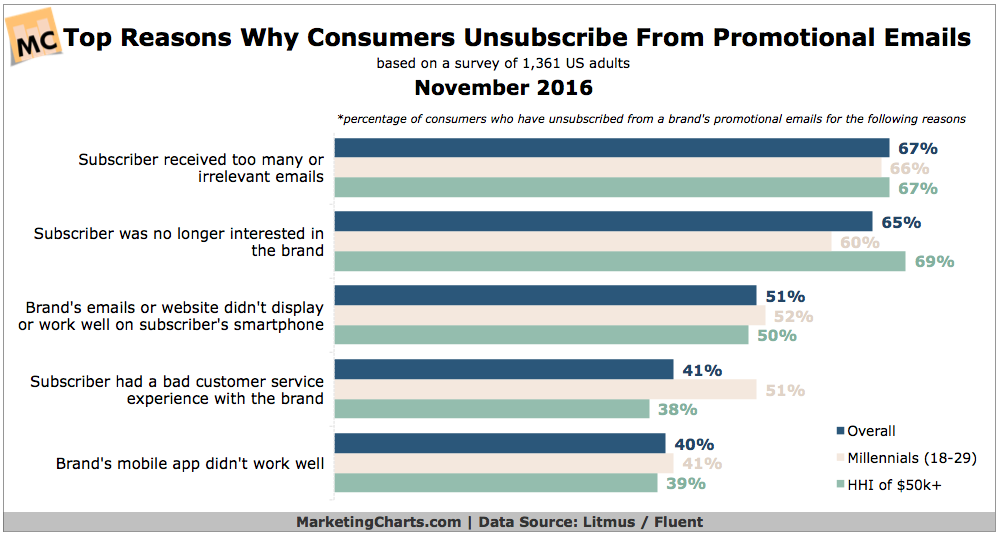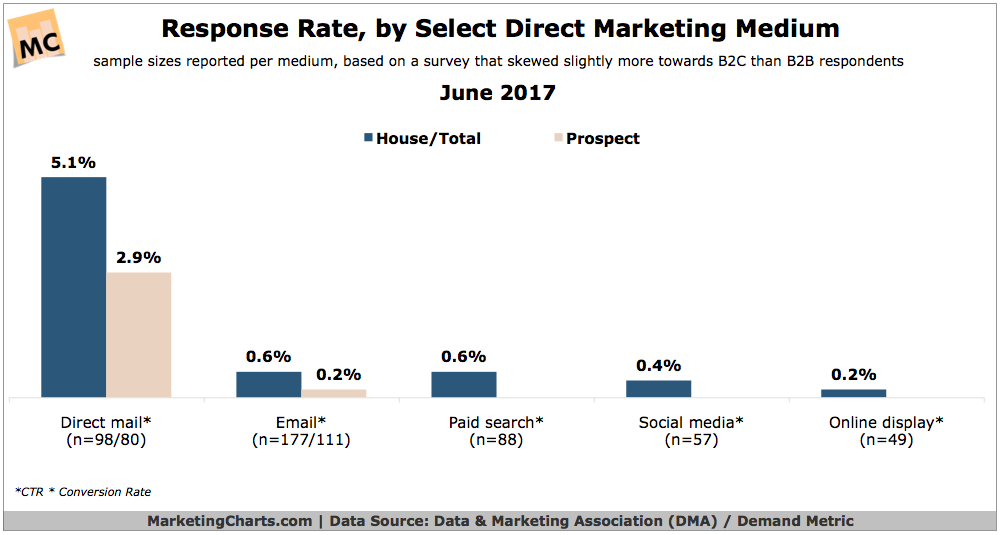Direct mail or email?
Which marketing tool is the best to get your message out?
While direct mail volume may be decreasing in recent years, due to the rise of digital marketing tools, direct marketing has seen a revival. The smaller mail volume means that your mail can finally stand out, especially when it is done in an innovative and creative way.
Moreover, the vast majority of printers anticipate growth in their direct mail volume over the next few years. They rely on digital color printing, targeting, and personalization, along with industry consolidation, as key market trends.
The numbers say it all, 66.3% of smaller businesses in the US invested in direct mail advertising in 2017. And, according to statista.com direct mail was the largest ad medium in the U.S. in 2016, followed by TV and digital.
The email has also become an increasingly popular form of outreach in the past ten years. It is an easy way to achieve maximum reach with minimum financial investment. Due to its ease and mainstream use, email is an essential communication tool for your marketing campaign.
But with these two marketing mediums that are so different we must ask, what benefits do each of them provide? Which tool is best suited for your specific marketing needs? How can we successfully use these tools together towards the same goal?
Let’s take a look at the pros and cons of using direct mail vs. email. We’ll start with the most popular, email marketing.

Email Pros
Cheap
Email marketing means cheap, although there are costs for email server hosting, and it takes time and effort to craft a compelling message along with appealing email design. Still, the email is a great marketing tool with the highest ROI out there.
Fast
An email can be delivered electronically across the internet instantly or within minutes, while to a snail mail it takes 2-4 days just to be prepared for delivery.
Instant Analytics Email is not only instantly delivered, but also provides fully analyzable data through email-marketing platforms, while for a direct mail campaign it takes time to set up detailed tracking methods so they can accurately measure the direct mail performance.

Cons
Spamming
Every day, 269 billion emails are sent to 3.7 billion email users around the world, according to a 2017 study. That means an average of 72 emails reaches your inbox every day. At least 80% of these emails will be considered spam.
Due to such massive distribution, the result is major email pollution and thousands of dollars lost in production. Since few of your emails will be opened you will lose at least 2.5 hours a day as well for dealing with email.
No Time, No Investment
More than half of email users admit that they don’t open and read their emails regularly.
Email readers are in a rush, they check email while commuting, on their mobile devices, or having lunch. They are not willing to invest their time or attention to what you have to say.
That’s because people read on screens differently. When reading on our phones or computers we tend to skim or pass over texts. Whether emails, articles, or news reports. Very rarely we feel inclined to thoroughly read the entirety of a text.
Everything on the internet nowadays is fast and the marketers have to put up a tough battle for people’s attention. It is very easy to glance over an email without reading it. Even if opened, the average attention span is only 2 seconds.
With so little time and space to sell yourself, you may shortly end up in the “trash bin”.

It Takes Time to Build a List
There are a few options when it comes to building your list. First, you can purchase a list of email addresses from a distributor. This is not the best investment since email addresses fluctuate often and your message will easily come off as spam. Another option is to create your own list: create consistent content and build a strong customer base to draw from. Lastly, using incentives such as discounts, webinars, or freebies will draw recipients to open your emails. Eventually, this will convert strangers into leads for your business, but it is definitely not a fast and simple way to build your business.
Direct Mail Pros
Targeted Mailing for Niche Markets
Direct mail is cost-effective because it can target more defined groups to receive ads. If you are running a small niche business you’ll get better results with targeted mailing, by filtering prospects by age, gender, income, shopping preferences, lifestyle, and other demographic and psychographic criteria. Such data is very hard to access when building an email list. With targeting comes segmentation and personalization, that will allow you to send only relevant offers to the most interested individuals.
A higher response rate
Due to its tangibility and the mutual investment it requires, direct mail gets a better response than other advertising tools. Although, the response rate of direct mail has been reduced over the past years, according to Direct Marketing Association (DMA) in 2017 direct mail received a 5.1% response rate for house lists and 2.9% for prospect lists.
To find out the response rate for email the DMA used multiple click-through rates by conversion rates to determine the response rate for the digital media. For house lists, the numbers indicate an email response rate no higher than of 0.6%.

Direct mail drives action
Eye-movement tracking studies show that when individuals are exposed to physical ads they experience higher excitement and desirability for the products advertised. This fact is also true about Millennials that have been raised with tablets and iPhones attached to their hands. 95% of them are often hoping to find postcards and letters in their mailboxes.
Moreover, direct mail builds motivation at a higher level than digital media. A study “The Neuroscience Behind the Response-Driving Power of Direct Mail”, reveals that direct mail improves brand recognition while requiring a less cognitive effort to process the message.
Direct Mail Cons
Higher Costs
Bulk Mail isn’t a cheap business. However, the prices can vary from project to project. It will depend on mail quantity, size and shape, level of personalization and how much you can save on postage. You can choose from a wide range of options: from black and white low-budget for mass mailing to glossy, colorful and creative mailers for high-net-worth niche clients. Because direct mail needs a financial commitment, in your best interest will be to target only interested prospects and to pitch your best offers.
Negatively perceived as Junk Mail
If the recipients don’t recognize your brand at first glance, chances are your mailer will end up in the trash. There is a fine line between the junk mail and direct mail that drives action and you have to put in a lot of effort to make a difference. Always use accurate mailing lists that have been freshly updated. Eliminate individuals that opted for “Do not Contact” and target effectively, studying your audience.
Choose your channel appropriately
One thing to be sure about direct mail vs email marketing is that you should choose your channel depending on what message you are sending:
In other words, use direct mail when you are sending catalogs, welcome packs, bills or statements, and loyalty rewards. And send emails rather than direct mail when you are spreading news, updates, confirmations, issues, and complaints or reminders. Use email for quick and informal communication, and direct mail for more formal and special occasions.
In conclusion, you shouldn’t switch from email marketing to direct mail. Direct mail and digital marketing are complementary. They can exist separately, but truly thrive when integrated. According to royalmail.com, more than 50% of consumers prefer a combination of digital and physical marketing. These customers feel more personally engaged in advertising. They can spend as much as 25% more time due to the combined effort. The secret to unlocking these benefits lies in integrating the two channels together.



